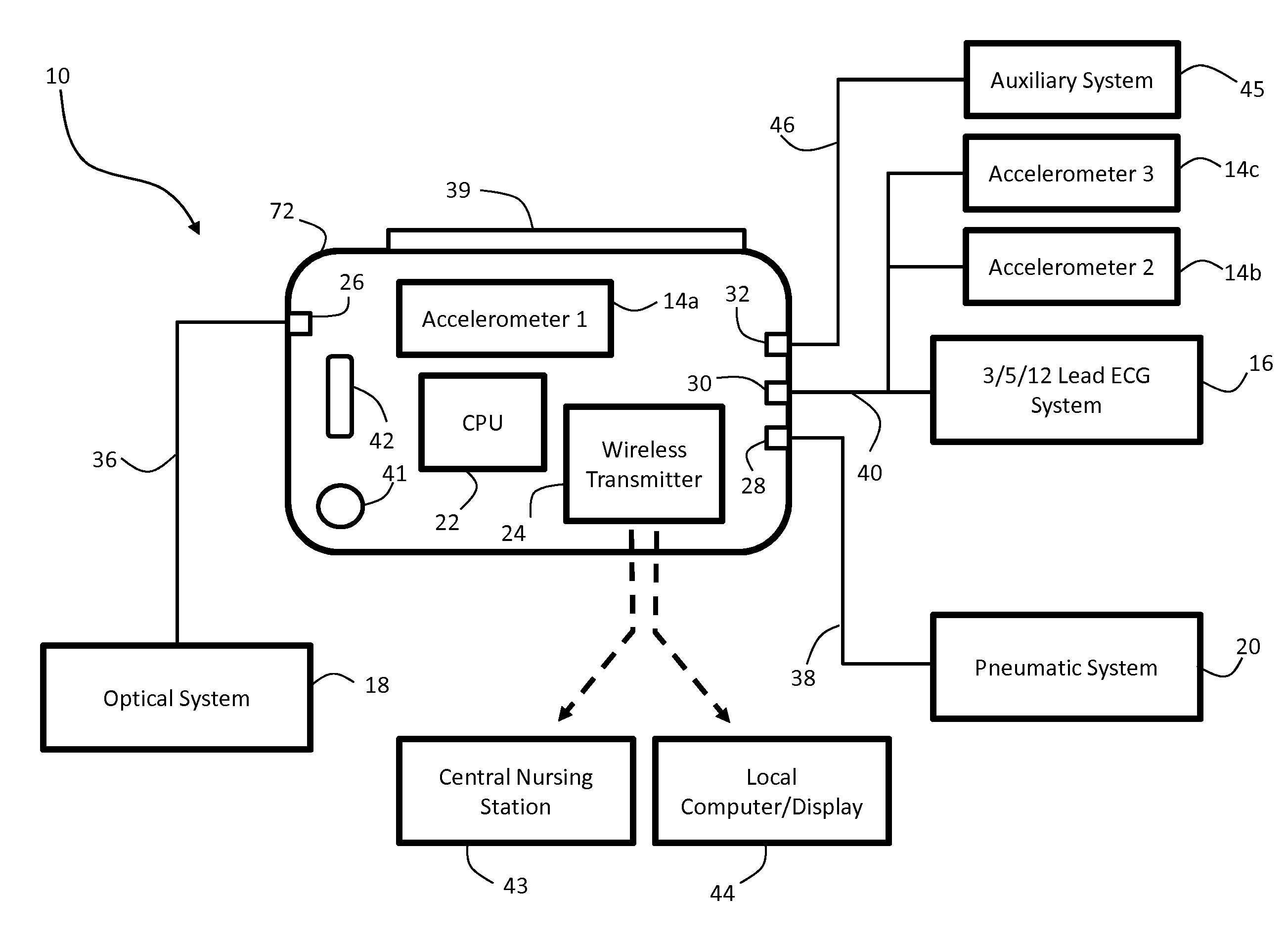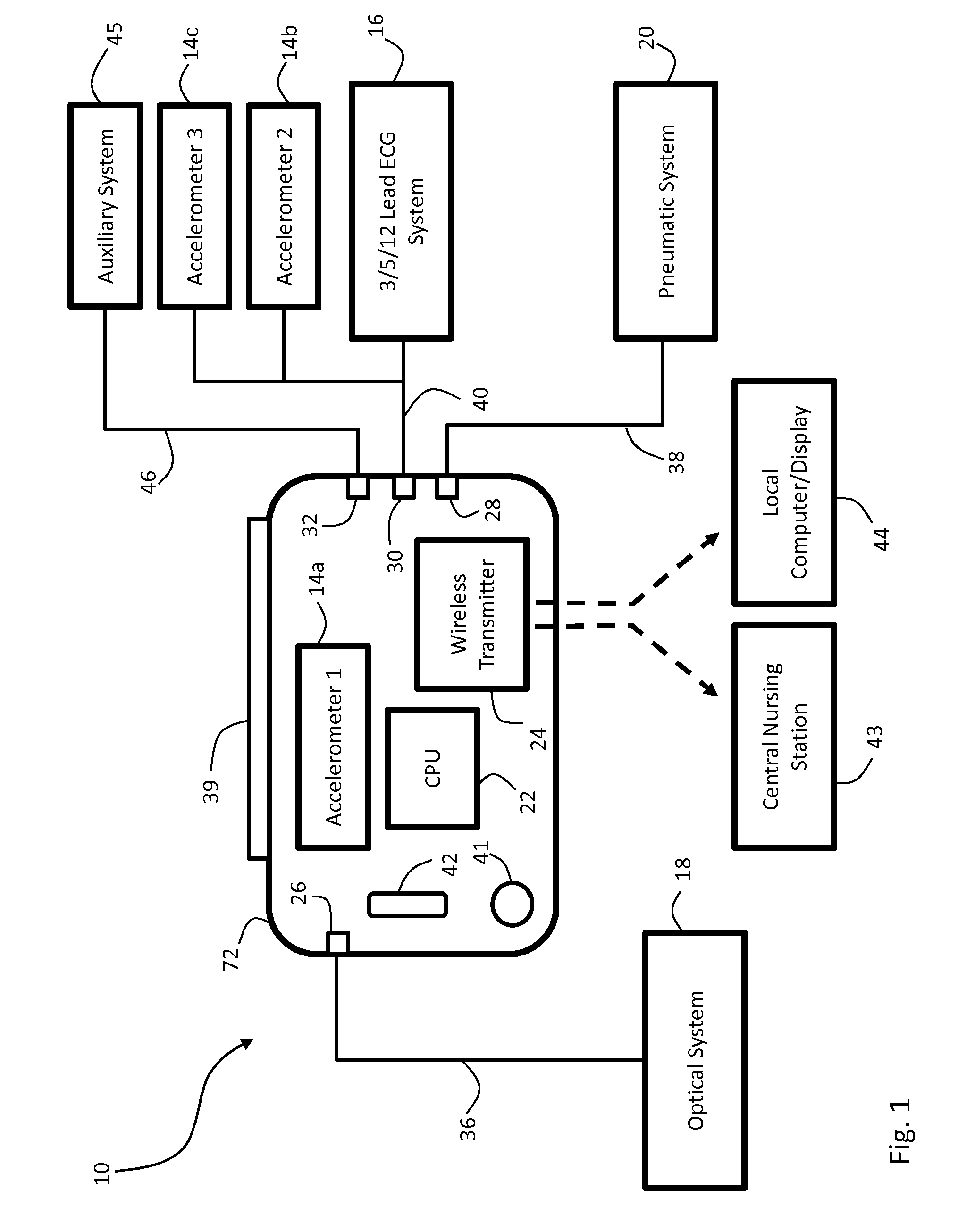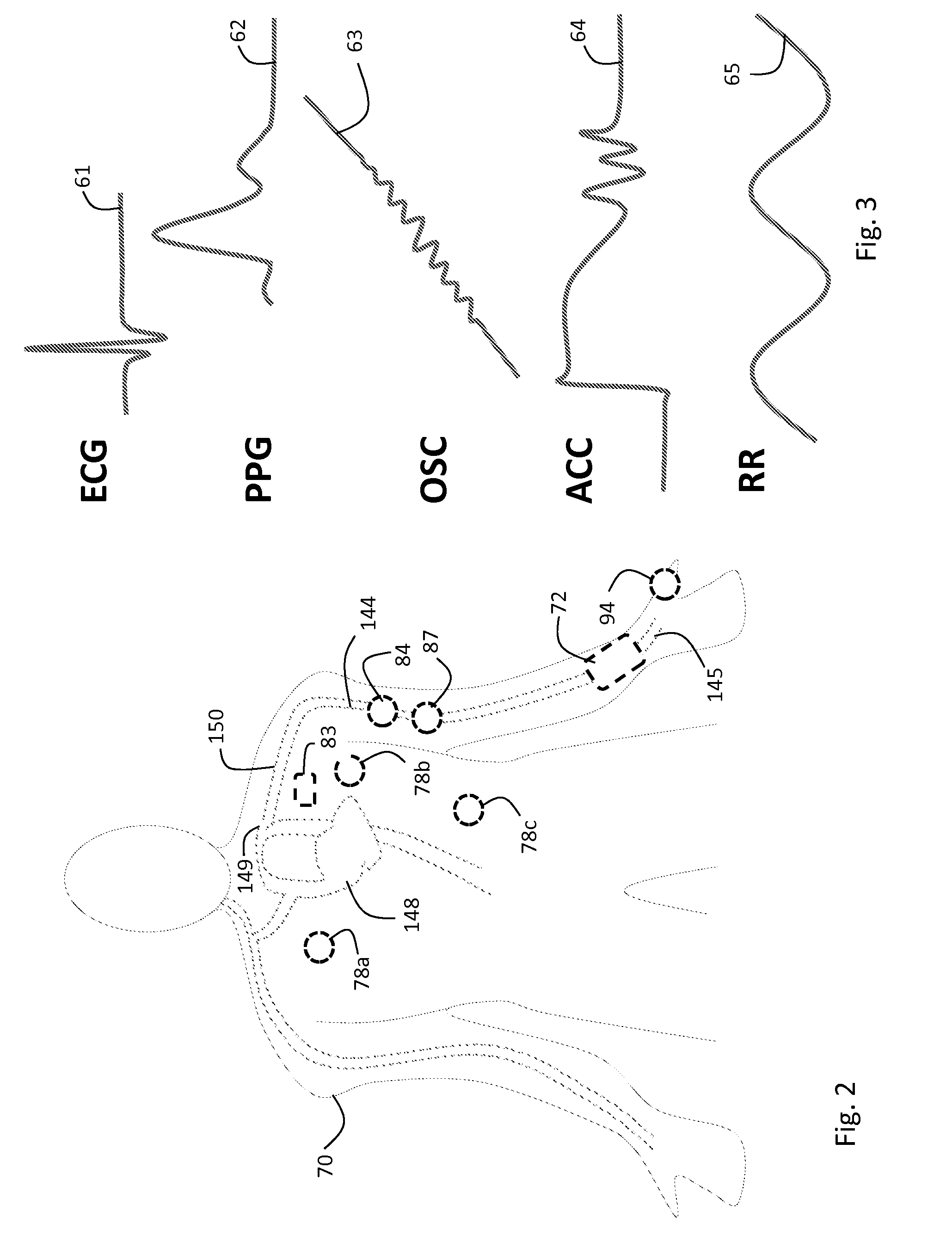Body-worn vital sign monitor
a vital sign and monitor technology, applied in the field of medical devices for monitoring vital signs, can solve the problems of difficult to effectively monitor patients in this way, heavy and unwieldy conventional vital sign monitors, and general illness of patients in these areas, so as to minimize the corruption of vital signs and improve the safety of hospitalized patients
- Summary
- Abstract
- Description
- Claims
- Application Information
AI Technical Summary
Benefits of technology
Problems solved by technology
Method used
Image
Examples
Embodiment Construction
System Overview
[0054]FIG. 1 shows a schematic drawing of a body-worn monitor 10 according to the invention featuring a wrist-worn transceiver 72 that continuously determines vital signs (e.g. blood pressure, SpO2, heart rate, respiratory rate, and temperature) and motion-related properties (e.g. posture, arm height, activity level, and degree of motion) for an ambulatory patient in a hospital. The monitor 10 is small, lightweight, and comfortably worn on the patient's body during their stay in the hospital; its form factor is described in detail below. A medical professional can apply the monitor, for example, to a recently admitted patient waiting in the ED, and the same monitor can provide continuous monitoring during their stay in the hospital. For example, the patient can wear the monitor in their hospital room, as they receive specific procedures or tests, during transport to other rooms, and even during surgery. The monitor 10 provides continuous monitoring, and features a sof...
PUM
 Login to View More
Login to View More Abstract
Description
Claims
Application Information
 Login to View More
Login to View More - R&D
- Intellectual Property
- Life Sciences
- Materials
- Tech Scout
- Unparalleled Data Quality
- Higher Quality Content
- 60% Fewer Hallucinations
Browse by: Latest US Patents, China's latest patents, Technical Efficacy Thesaurus, Application Domain, Technology Topic, Popular Technical Reports.
© 2025 PatSnap. All rights reserved.Legal|Privacy policy|Modern Slavery Act Transparency Statement|Sitemap|About US| Contact US: help@patsnap.com



